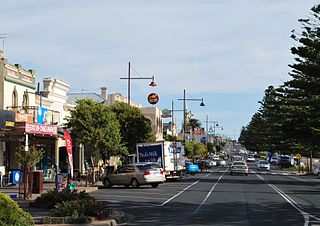
Portland is a city in Victoria, Australia, and is the oldest European settlement in the state. It is also the main urban centre in the Shire of Glenelg and is located on Portland Bay. In June 2018 the estimated population was 10,900, having decreased slowly at an average annual rate of −0.03% year-on-year over the preceding five years.
The aluminium division of Rio Tinto is a subsidiary of Rio Tinto, based in Montreal. It was created on 15 November 2007 as the result of the merger between Rio Tinto PLC's Canadian subsidiary, Rio Tinto Canada Holding Inc., and Canadian company Alcan Inc. On the same date, Alcan Inc. was renamed Rio Tinto Alcan Inc..
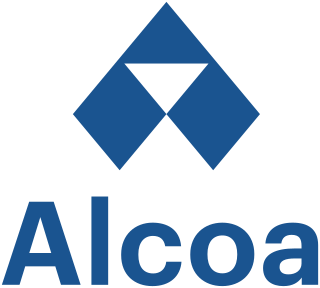
Alcoa Corporation is an American industrial corporation. It is the world's eighth largest producer of aluminum, with corporate headquarters in Pittsburgh, Pennsylvania. Alcoa conducts operations in 10 countries. Alcoa is a major producer of primary aluminum, fabricated aluminum, and alumina combined, through its active and growing participation in all major aspects of the industry: technology, mining, refining, smelting, fabricating, and recycling.

Manapōuri Power Station is an underground hydroelectric power station on the western arm of Lake Manapouri in Fiordland National Park, in the South Island of New Zealand. At 850 MW installed capacity, it is the largest hydroelectric power station in New Zealand, and the second largest power station in New Zealand. The station is noted for the controversy and environmental protests by the Save Manapouri Campaign against raising the level of Lake Manapouri to increase the station's hydraulic head, which galvanised New Zealanders and were one of the foundations of the New Zealand environmental movement.
The Australian Gas Light Company (AGL) was an Australian gas and electricity retailer. It was formed in Sydney in 1837 and supplied town gas for the first public lighting of a street lamp in Sydney in 1841. AGL was the second company to list on the Sydney Stock Exchange. The company gradually diversified into electricity and into a number of different locations. After a combination of a merger and demerger with Alinta in 2006, it was replaced by AGL Energy.
Alumina Limited is an Australian holding company. Spun off from Western Mining Corporation in 2002, its sole asset is a 40% shareholding in Alcoa World Alumina & Chemicals.
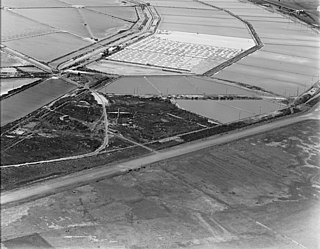
Moolap is a residential and industrial suburb of Geelong, Victoria, Australia. The name Moolap is derived from an Aboriginal word for nearby Point Henry, moo-laa, thought to mean 'men gathering to go fishing'.

The Loy Yang Power Station is a brown coal-fired thermal power station located on the outskirts of the city of Traralgon, in south-eastern Victoria, Australia. It consists of two sections, known as Loy Yang A and Loy Yang B. Both Loy Yang A and B are supplied by the Loy Yang brown coal mine. The Loy Yang power stations are located in the brown coal rich Latrobe Valley, along with the Yallourn power station.

The Alcan Lynemouth Aluminium Smelter is a mothballed industrial facility near Ashington, Northumberland, on the coast of North East England, 0.65 mi (1.05 km) south of the village of Lynemouth. The smelter is owned by Canadian aluminium company Alcan, which is part of Rio Tinto. The smelter was opened in 1974 at a cost, which exceeded its budgeted estimate of £54 million, of $156 million. The plant ceased production in March 2012.
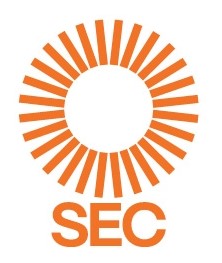
The State Electricity Commission of Victoria is a government-owned electricity supplier in Victoria, Australia. It was set up in 1918, and by 1972 it was the sole agency in the state for electricity generation, transmission, distribution and supply. Control of the SECV was by a Board of Commissioners appointed by the Victorian Government. After 1993, the SECV was disaggregated into generation, transmission and distribution companies, which were further split and then privatised in the mid to late 1990s. However, electricity supply agreements with the Portland and Point Henry aluminium smelters were retained by SECV, which continued as their electricity supplier.
Alcoa World Alumina and Chemicals is a joint venture between Alumina Limited and Alcoa and is abbreviated to AWAC. AWAC's business is the mining of bauxite, the extraction of alumina and the smelting of aluminium. It has about 25% of the global alumina market. Alcoa acts as the day-to-day manager.

The Anglesea Power Station was a brown coal–powered thermal power station located at Anglesea, in Victoria, Australia. The station had one steam turbine, with a capacity of 150 megawatts (200,000 hp). It was operated by Alcoa of Australia and supplied almost 40% of the electricity used by the company's Point Henry aluminium smelter, until the smelter's closure in August 2014.

AGL Energy Ltd is an Australian listed public company involved in both the generation and retailing of electricity and gas for residential and commercial use. The company has an operated generation capacity of 10,984 MW. 85% of the company's generation comes from the burning of coal. The company emits 42,227,180 Total Scope 1 Emissions. AGL is also a significant investor, owner, and operator, of renewable energy assets.

Volta Aluminum Company, known as VALCO, is an aluminium company based in Tema, Greater Accra Region founded by Kaiser Aluminum and now wholly owned by the government of Ghana.
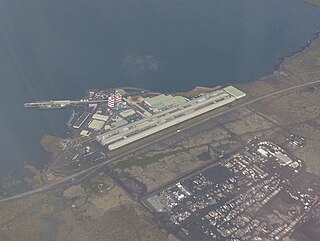
Aluminium smelting is the process of extracting aluminium from its oxide, alumina, generally by the Hall-Héroult process. Alumina is extracted from the ore bauxite by means of the Bayer process at an alumina refinery.
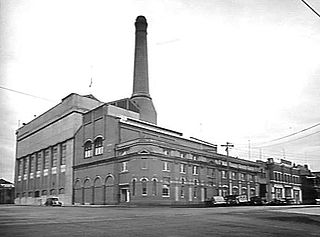
The city of Geelong, Victoria, Australia was once home to two coal fueled power stations - Geelong A and Geelong B.
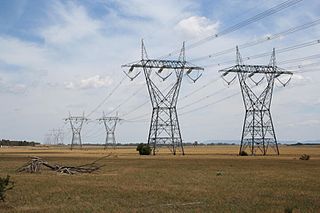
Energy in Victoria, Australia is generated using a number of fuels or technologies, including coal, natural gas and renewable energy sources. Brown coal is the main primary energy source for the generation of electricity in the state, accounting for about 85% of electricity generation in 2008. The amount of coal-fired power has decreased significantly with the closure in 2017 of the Hazelwood power station which supplied around 20% of Victoria’s electricity, and to a lesser extent with the exit of Anglesea power station in 2015. Brown coal is one of the largest contributors to Australia's total domestic greenhouse gas emissions and a source of controversy for the country. Australia is one of the highest polluters of greenhouse gas per capita in the world. In 2016, about 16% of Victoria’s electricity was from renewable sources, with a government target to increase that share to 40% by 2025. In 2019, renewable energy provided 23.9% of the state's electricity. On 28 March 2021, Victoria reached 50% renewable energy.
The Portland aluminium smelter is located at Portland, Victoria, Australia. The smelter has a production capacity of 345,000 tonnes of aluminium per yearThe smelter is a joint venture owned by Alcoa World Alumina & Chemicals (55%), CITIC (22.5%) and Marubeni (22.5%). Alcoa manages the smelter operations.

The Tiwai Point Aluminium Smelter is an aluminium smelter owned by Rio Tinto Group (79.36%) and the Sumitomo Group (20.64%), via a joint venture called New Zealand Aluminium Smelters (NZAS) Limited.















